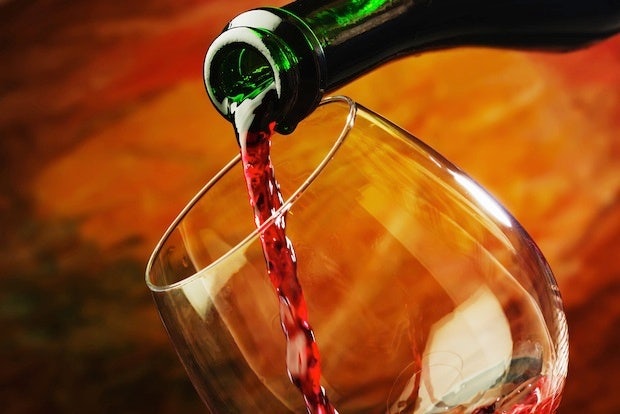
In China, it's all about red wine. (Shutterstock)
If it wasn't already clear how much Chinese drinkers love red wine, recent growth numbers as a result of the government’s anti-corruption crackdown should make it pretty obvious. While the campaign has caused high-end alcoholic beverages as a whole—including both wine and spirits—to see major sales slumps, red wine has stood out as a bright spot in the alcohol market.
According to a recent report by Vinexpo, wine consumption as a whole suffered a predicament similar to that of high-end liquors such as cognac and baijiu as the government cracks down on luxury gifting and fancy banquets paid for by public funds. When looking at red, white, and rosé wines combined, total consumption decreased by 2 percent in 2013 after growing by 27 percent between 2007 and the previous year. China actually saw a 10 percent decline by value in wine imports from France, which make up 40 percent of all the country’s imported wine.
If you just look at red wine, however, you see a completely different story. Vinexpo also concluded that China including Hong Kong overtook France and Italy as the world’s largest red wine consumer in 2013. The amount of consumption has skyrocketed by 136 percent in five years. In fact, 155 million of China’s 181 million cases consumed during the past year were red.
Much of this growth in red wine drinking is coming from middle-class consumers purchasing mid-range bottles. According to a report by the South China Morning Post:
The revenue gap has been, at least partially, filled by demand from young urban professionals who have developed a genuine love and appreciation of wine, rather than a desire to guzzle down exorbitantly priced Lafite Rothschild or Pétrus.
"These are younger people in their 20s and 30s, urban professionals who see wine as a hobby and a way of socialising. They drink to enjoy wine not to fall down," says Campbell Thompson, who runs The Wine Republic, a company little affected by the gift-giving clampdown. It notched up an increase in sales last year to 20 million yuan (HK$25.5 million).
Many wine companies have been able to weather the slowdown by offering affordable bottles. One example is Bordeaux vintner Helen Ponty of Le Ponty Wines, who visits China to sell wine directly to customers. According to South China Morning Post:
Since starting the business less than two years ago, the entrepreneur has sold 50,000 bottles, with China demand now accounting for around a third of the Bordeaux vineyard's production. Sales are consistent, despite the austerity drive.
"When I moved to China everyone was telling me you have to be very cheap, or very expensive, that there was no market for wines at around 300 yuan to 600 yuan," says Ponty.
"Now there is no more market for the expensive wines - the government doesn't buy it any more and the big companies have cut back, so there is now a market for those mid-range wines like ours."
Another example of a Bordeaux seller cashing in on this mid-range shift is Maison Sichel, which actually logged 30 percent China growth over the past year. In an interview with The Drinks Business on how the company did it, the company’s export director Charles Sichel said it was simple: selling to the middle market.
“Since the new Chinese government tried to stop corruption using ostentatious gifts, which included cases or bottles of very fine wine from Bordeaux, the Chinese have suddenly discovered that the 1855 classification is not only for the first growths, and they have also discovered delicious cru bourgeois offering great value for money,” he recorded.
Maison Sichel, which has been shipping directly to China since 2000 and has had an office on the Mainland since 2008 (initially in Beijing and now in Shanghai), has been busy developing a market for fine wines from Bordeaux but also the region’s mid-level wines – those with an ex-cellar price between €5 and €20, according to Sichel.
This triumph of the mid-range product is being felt elsewhere in China as luxury sales slow. When it comes to the spirits business, global drinks conglomerate Diageo reported major drops in luxury spirits sales, but saw 37 percent growth for the cheaper Bailey’s. Strong “masstige” sales have also helped mid-tier watch and fashion brands, boosting companies such as Coach in China, who see the country as a savior from slowing middle-class sales in the United States.